If you have been to Tucson, you know how difficult it is to get to see all the mineral shows... There are so many of them, widespread all around the town. This year, I've only been to the Westward Look, the Innsuites and to the Main show. Alyssa Morgan got to see the Pueblo show (at the River Park Inn) as well. I got distracted by a 2-day conference on the Geology of Gem Deposits organized by Lee Groat... Great conference, I'm not regretting!
If we want to summarize the mineral show this year, I would say that the big hit was the azurite from Milpillas, Mexico. I've seen a few in Munich (not on display), but this year, they were just everywhere. It is not a new find, but the miners found a second, bigger (much bigger) pocket compared to the original found.
Shall we begin with the Innsuites? (all photos and copyright by E. Gaillou unless otherwise mentioned).
Ahh, the Innsuites. How wonderful it is going from room to room, especially when it's 85F out! Yes, this year, we got lucky, the weather was just perfect, especially the second week of the show.

If we want to summarize the mineral show this year, I would say that the big hit was the azurite from Milpillas, Mexico. I've seen a few in Munich (not on display), but this year, they were just everywhere. It is not a new find, but the miners found a second, bigger (much bigger) pocket compared to the original found.
Shall we begin with the Innsuites? (all photos and copyright by E. Gaillou unless otherwise mentioned).
The Innsuites mineral show
Ahh, the Innsuites. How wonderful it is going from room to room, especially when it's 85F out! Yes, this year, we got lucky, the weather was just perfect, especially the second week of the show.
By the entrance of the Innsuites: swimming pool and palm trees (Photo by Alyssa Morgan).
Again, the dinosaurs were here, some walking around the show (Photo by Alyssa Morgan).
some flying around.
Some had their head off
Some were really scary (ok, not the one bubbled wrap on the background). Photo by Alyssa Morgan.
Yes, I know, you are reading this to know what was going on with rocks. Alright. Why don't we begin or tour with Jordi Fabre's room?

This calcite was China was fun because it had some overgrowth of fluorite on its edges (see below pictures).
I told you about azurite from Milpillas (Sonora, Mexico). The ones that I will show you in this blog have a "little something" that makes the difference.
Still in Fabre's room, this azurite with malachite is associated with native copper.
But wait, on this same piece, the copper is replacing wood! Lovely.
Another Milpillas. This one is all about the color.
I swear, I didn't photoshop it. I just got closer to the lower left crystal on the previous picture.
These crystals of gersdorffite (nickel arsenic sulfide) are about 2-3 cm across. Impressive 40 cm mineral total (Fabre's specimen).
Yes, I found a way to show you opals in the mineral section. This opal shown above and below is of the hyalite variety (amorphous opal with a network-like structure, similar to glass; never display play-of-color as the silica spheres making off the opals are too big and disorganized). These kinds of opals grow in a volcanic environment, in hydrothermal condition. This one found comes from Mexico central. What makes it special is its exceptional green fluorescence. And no need for a UV light: there is enough UV from the sun for this opal to show off its fluorescence! The green fluorescence is due to uranyl (UO22+) in the opal (analyses confirming the presence of U in the samples).
The fancy Westward organized by Dave Waisman was a success again this year (Feb. 7-10). I guess the weather helped! No picture of minerals were taken at the Westward Look this year. I admit... I forgot my camera this very day. But we will find the dealers back at the Main Show anyway, more to come below!
Wednesday February 12: day of set up. Museums and collectors are offered an opportunity to show off their best rocks! This year theme, for the 60th anniversary of the show: Diamond... but also gold, silver and gemstones. We chose our theme: California (with diamond, gold, platinum and gemstones). As you saw in our previous post, we brought some of our icons with us, such as the benitoite wreath and the gold tree. Here is how it goes (all pictures in this section by Alyssa Morgan).
What is a mineral show without me starring at some pink fluorite from France? I'm telling you: it won't stop until we get one for our museum. Just saying!
I personally think that the most fun aspect of the Main Show is the display cases. The finest minerals at the show are in the exhibits as museums and collectors are showing their best stuff, fitting with the theme (or not!). This year's theme was broad enough that people could have fun putting their display cases together. For example, we saw a lot of great silver cases, among others. But my favorite one was this diamond case. It was put together by David Kalins (who won the best educational exhibit by an individual). It had a lot of information about diamonds, mostly growth, etching features and about the color of diamonds. But also, the diamond display, if not the biggest, showed a wide range of shapes and colors.
Laurent Thomas of Polychrom France had an amazing arrival of new material from the Democratic Republic of Congo, including dioptase (see picture above), hemimorphite on cerrusite, malachite and azurite. In the picture above, the dioptase crystals are on matrix, most likely two generations of them. The dioptase crystals on the right have inclusions of clay minerals, which give them this unusual color and coating. One of my favorite of the show!
Nothing new here, but pyrite from Spain are always fun!
Especially this suite of pyrite cubes.
Also seen at the Innsuites various chalcopyrite covering chalcocite from Daye mine, China, sometimes as single piece, sometimes in a coral shape. Specimen: Huanqiu Crystal Mineral Museum specimen, photo by John Veevaert.
Talking about John Veevaert, here he is, with some marshalsussmanite. Find the full story about marshalsussmanite on John's website!
An example of marshalsussmanite from J. Veevaert's collection (photo by J. Veevaert).
See at Rock Currier's ballroom: this japan law twins (yes, 2 of them on the same matrix!) from Andilamena, Madagascar.
It goes without saying that Daniel Trinchillo's house had spectacular specimens... Especially this one, because we don't have a demantoid from Madagascar yet, and this one was just amazing: color, transparency, shape, size... Everything was there...
Bill Severance reported these giant Shiva Lingam Stones next to the one of the tent at the Innsuites (Photo: Bill Severance).
That is all we will feature for the Innsuites, even if there were plenty of other amazing rocks... In this picture, from left to right: Alyssa Morgan, Marco, Brice, Laurent, Paul et Jean-Claude.
Also, have a look at Jolyon Ralph's blog for more about the Innsuite show!
Westward Look
The fancy Westward organized by Dave Waisman was a success again this year (Feb. 7-10). I guess the weather helped! No picture of minerals were taken at the Westward Look this year. I admit... I forgot my camera this very day. But we will find the dealers back at the Main Show anyway, more to come below!
Caroline Martaud and Bill Larson in front of their display room at the Westward Look.
Setting up for the Main Show
Wednesday February 12: day of set up. Museums and collectors are offered an opportunity to show off their best rocks! This year theme, for the 60th anniversary of the show: Diamond... but also gold, silver and gemstones. We chose our theme: California (with diamond, gold, platinum and gemstones). As you saw in our previous post, we brought some of our icons with us, such as the benitoite wreath and the gold tree. Here is how it goes (all pictures in this section by Alyssa Morgan).
It begins with unpacking.
Then putting our rocks out. Then Tony is not happy about the color of the background (note the light gray liners -which we had all agreed on ahead of time!).
Now we have a white background. Pulling more stuff out.
Then Tony and I are not happy about the heights of the liners... We had small and big specimens, it was not an easy task! But Tony was there to save the day and find the perfect trick for our shorter rocks!
Finally, we all agreed on how to display our rocks. Time to hang out the posters!
Here it is! All done!
Our stars: benitoite wreath and cut stone and our gold tree from the Colorado quartz mine.
Our new star! Our main acquisition this year: a gold nugget from Los Angeles County (no kidding), found in the San Gabriel River. It weighs 99.7 grams (3.2 oz. troys).
We would like to name it "The Cobra". What do you think? Any suggestion? Please, write them up on the comments at the bottom of this page!
But most importantly: the result. People looking at our exhibit! We hope that everybody enjoyed it, especially the young ones!
The Main Mineral Show: minerals from dealers
Let's begin with minerals that were not on the main display cases, but found at dealers' booth. I would like to begin with a dealer I didn't know before: Mineraly's. You had to pass the first row of little carved animals, and on the back of the booth (located on the last aisle, on the East side), there were some little treasures.
For example, this nice displaying piece of dioptase from the Democratic Republic of Congo, on matrix, with quartz (most likely with iron oxydes, giving the reddish-brown color), and on the side, associated with shattuckite.
A floater of dioptase from Congo, from Mineraly's again.
This impressive wulvenite from Iran.
And this fun natrolite on fossilized wood from Mount Elgon, Uganda.
Yes, I like fun things. I know, it's just quartz and amethyst. But when I saw it, it immediately reminded me of the Medusa. So... Here it is, the Medusa, but this one comes from Goboboseb Mountains, Namibia. Seen at Karp Minerals booth.
Remember I was talking about Milpillas (Sonora, Mexico) azurite? Well, we found the biggest azurite crystals at La Casa de Cobre booth. They had a GREAT selection of azurites, at good prices as well. Most likely the best display of Milpillas azurite of the show. Fyi: this very specimen was gone by the end of the show.
What is a mineral show without me starring at some pink fluorite from France? I'm telling you: it won't stop until we get one for our museum. Just saying!
Here is a pink fluorite from L'Aiguille Verte, Chamonix, France, seen at Alain Martaud's booth. Delicious.
Twinned or not twinned? This galena (on quartz) from Madan, Bulgaria rises the question. However, by just looking at it, several specialists voted for a twin! Measurements still to conduct, but it indeed looks like it's the right angle there. Seen at Alain Martaud's booth.
Another Alpine pink fluorite, this one from Ziggenstock, Grimsel, Swizerland, seen at Christophe Gobin's booth. Now, look closer:
Yes, it has some purple in it, on the outer layer. Isn't it special?
I found myself taking lots of pictures of acanthite. The shape of acanthite crystals just fascinates me! Most likely coming from a fast growth, it creates those skeletal shape with endless interesting forms. Seen at Christophe Gobin's booth.
I'm trying to represent the Milpillas azurite omnipresence as best as I can. Below and above are mineral specimens found at Christophe Gobin's booth. Above, on malachite background, below, on the white matrix (another electric blue azurite).
Modelling this Malalu quartz (from Malalu Mountains, Nepal), Carl Larson with his cowboy look, who also gives the scale for the picture. Thanks Carl! Seen on Pala International's booth.
Another favorite of the show. I love etching, and this aquamarine was etched to perfection. Also seen at Pala International's booth, it comes from Wayne Thompsons collection, and is from Medina, Minas Gerais, Brazil.
Also seen this time in Tucson: a few tanzanite on matrix. Exciting! We don't have that in our collection either... Seen at Pala International's booth.
This is fun! Two slices of copper replacing wood, from Cyprus, seen at Crystal Classics' booth.
The Main Mineral Show: the display cases
I personally think that the most fun aspect of the Main Show is the display cases. The finest minerals at the show are in the exhibits as museums and collectors are showing their best stuff, fitting with the theme (or not!). This year's theme was broad enough that people could have fun putting their display cases together. For example, we saw a lot of great silver cases, among others. But my favorite one was this diamond case. It was put together by David Kalins (who won the best educational exhibit by an individual). It had a lot of information about diamonds, mostly growth, etching features and about the color of diamonds. But also, the diamond display, if not the biggest, showed a wide range of shapes and colors.
Diamond exhibits
Best education case of the show: David Kalins' display on Diamonds: diversity in forms and colors (and 4 photos below).
Star of David twin on matrix... Nice. Very nice!!! David Kalins' specimen.
Some diamonds in kimberlite (which is the magma in which the diamond is brought back to the surface -not the magma it crystallizes from-).
The GIA display with some historic diamonds... and King Louis XIV. Just above: replica of the Hope and its previous cuts (Tavernier blue and French Blue). No, the blue color is NOT right, it's more about the cut and the size of the gems!
Great replica of the Mogul diamond, again in the GIA display
Somewhere in the Rainbow plays it fancy with this display case. It shows a Cartier Bandeau created by Cartier in 1920, in Paris, France. It contains a total weight of 58 ct of diamonds set in hand carved platinum.
The Post Diamond Tiara, from the Smithsonian Institution, was made around 1840, most likely in France. The tiara is made of 1,198 diamonds on gold and silver. The flowers are set "en tremblant".
Gold, silver, etc.
Great gold from Mockingbird mine, California, and the silver from Himmelsfürst, Germany, is not bad either! Display by The Mineral Trust.
Very elegant display by the University of Arizona...
And zoom in on this unbelievable gold from Venezuela. What a shape, what a size. I would love to see the back of it!
Natural gold egg from a river in Russia. Isn't this little guy fun?
Silver by Larson & Meieran (Larson's: first photo below; Meieran's: the following 3 photos). Spectacular!
Some goodies from Scott Werschky's collection.
Including this fun acanthite.
More silver and acanthite, I didn't get whose collection it was though.
Great Kongsberg silver exhibit.
Gems & Jewelry
From the Proctor family trust collection, this necklace is composed of 97 sapphires and diamonds.
One of my favorites: this sapphire button (Turban Ornament, Mughal Style, India) from the late 17th century was first own by Sir Hans Sloane (picture below). It is now part of the Natural History Museum of London.
Some Gems & Gemology covers with their matching jewelry.
Treasures of gold and gemstones from the River Rhine, by the Mineral Museum of Bonn, Germany. This case was put together by Curator Renate Schumacher, she won the award for "Best Education Case by an Institution"
Presenting diamonds, gems, gold and silver, the Harvard Museum display was one of the best's museum exhibits on theme.
Out of theme but still fun
Proctor's display
Great azurite from Proctor's collection
From the Mineralogical Association of Dallas
The 7 pictures below are from this display case by Collectors' Edge. Wow.
Vanadinite from Geronimo Mine, La Paz County, AZ.
Gail Spann's display case: a Tribute to all breast cancer survivors. All in pink!
Because I like pseudmorphs (Cincinnati Museum Center).
Andradite with gaudefroyite from N'Chwaning I Mine, Kuruman Cape Province, South Africa (Hoppel Collection).
The story of a small box in a bank vault in one of the twin towers with gold in it: Gold survives 9/11.
Pyrite: Fool's gold.
Rhodochrosite from the Sweet home mine, Colorado; halite and aphtithalite from the U.S. Potash Mine, New Mexico.
Great morganite crystal, love the inclusions! From the Arizona Mineral Minions.
I've never seen such an amazing peridot... It is from Mogok, Burma, in the Arizona Mineral Minions display case.
Minerals are made of chemical elements. A great educational display case!
And this year is the year of CRYSTALLOGRAPHY! Display by Herb and Monica Obboda.
And finally, sadly, our colleagues from the ROM museum in Canada never got their exhibit: it was kept by the US custom until the end of the show.
Nights out
Day looking at rocks, night socializing. That's what Tucson is all about!
During the ICA reception: fun time with Andrew Cody (Cody opals)
Here with Delphine and Alyssa, trying a new restaurant downtown.
The Kristalle & Crystal Classics annual Party! More pics on the Crystal Classics website: http://crystalclassics.co.uk/
And one with Dona Leicht and Gian Carlo Parodi.
A night at the Westward Look. Introduction by Dave Waisman.
Recognition of Bryan Lee by Gene Meieran.
And presentation on tourmaline from the Pederneira mine, Brazil, by Daniel Trinchillo.
Lithographie recognition night: Gloria Staebler giving an award to John Rakovan for the best article of the year. Gloria herself received the Carnegie award this year. Congrats to both of you!
This year, the Pueblo had organized a series of evening lectures. I was able to attend the one of Frederico Pezzotta (above) on the color of tourmaline, and of Federico Barlocher on Burma (below). Please, more next year!
The Society of Mineral Museum Professionals (SMMP, photo by Katya Ralph) meeting followed by the traditional paella, organized by the Spanns and Jordi Fabre. Every year, they organize a party for museum curators and for the Friends of Mineral Forum (FMF) members.
Jim Spann making sure the paella is doing ok.
The cook at work.
The 3 organizers on the left: Jordi, Jim and Gail.
Diana, Ian, Jim, Gail and Bryan celebrating Tucson 2014!
Curators and the Bodes continuing the party at the Surly Wench.
This is serious.
Donations and acquisitions
Acquisitions
Gold nugget from Los Angeles County
The most exciting acquisitions we made this year is a gold nugget from Los Angeles County. No, seriously, definitely probably from LA! It was allegedly found in the San Gabriel River. It weighs 99.7 grams (i.e. 3.2 oz troy). But a full investigation into the provenance of this gold will come online soon, stay tuned! We want to call it "The Cobra". What's your thought on it? Leave comments at the bottom of this page!
Apophyllite from India
That is right: we didn't have a disco ball yet! But with the discovery of a new pocket, we jumped on the opportunity, and purchased this highly photogenic specimen.
Recto
Verso
Donations
This year again, we had important donations by dealers and our very own donors. Thank you so much again!
Aphtithalite from New Mexico
Phillip Simmons gave us this wonderful example of aphtithalite from the U.S. Potash Mine, Carlsbad, New Mexico.
Phillip Simmons, the donor, with the LA team!
Barite from Morocco
We got two donations of blue barite from Sidi Lahcen mine, Nador, Oriental Region, Morocco. The first one, a barite on matrix, donated by Christophe Gobin, and the second one by GMC member Joel Siegel. We have been wanting one since we were in Morocco in 2012, when they first came out. However, it's the first year that we have seen a lot of unbroken specimens. Win win!
Blue barite on matrix from Morocco. Donation: Christophe Gobin.
Blue barite from Morocco: donation by Joel Siegel.
Zoom in on the last specimen, with overgrowth of barite on one of the blades.
Autunite from France
Alain Martaud donated this amazingly bright yellow autunite from Peny quarry, Haute-Vienne, Limousin, France. We didn't have any from this locality yet.
French yellow autunite, gift of Alain Martaud.
THANK YOU DONORS!
See you next year in Tucson!


























.JPG)
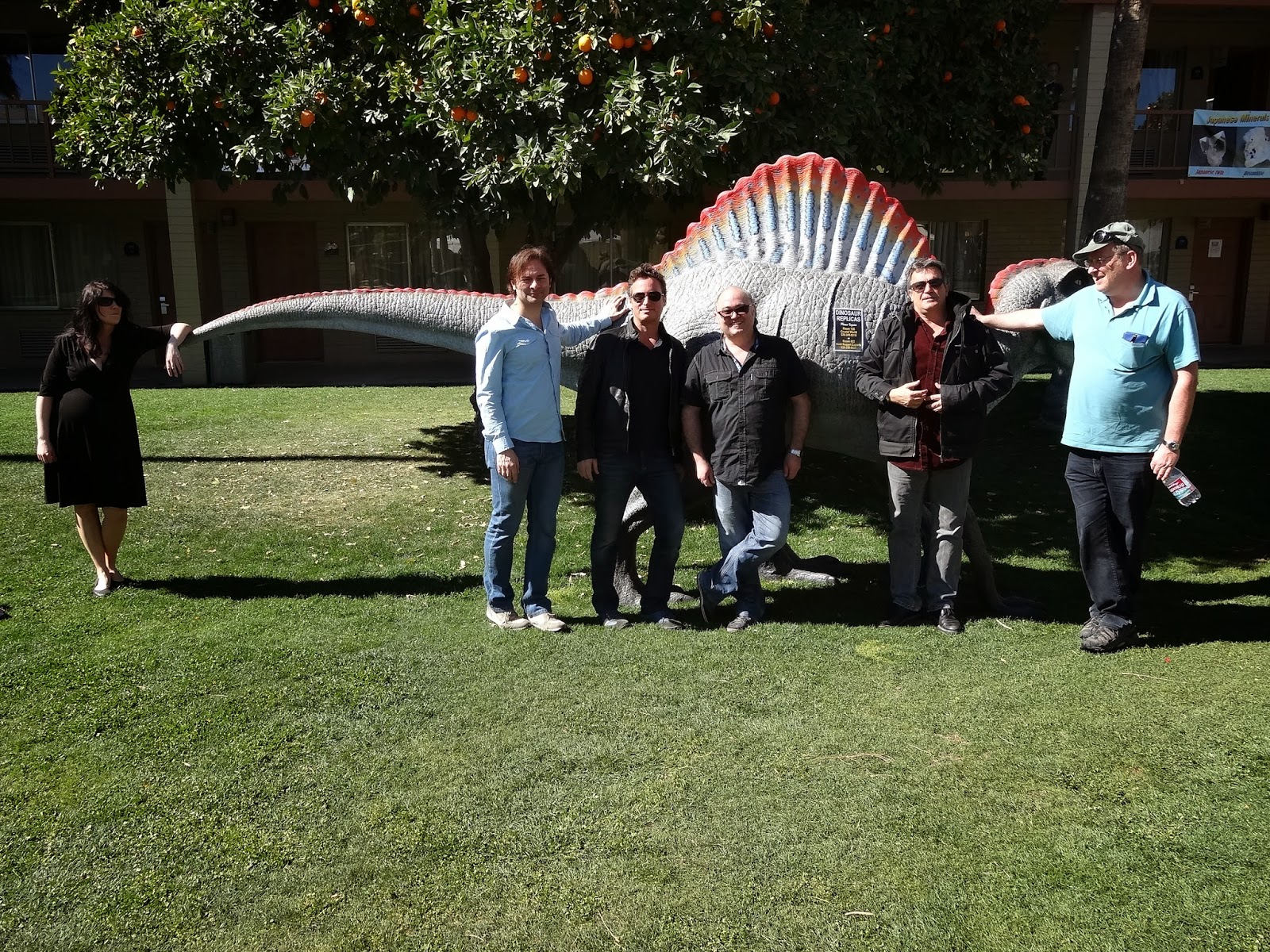


















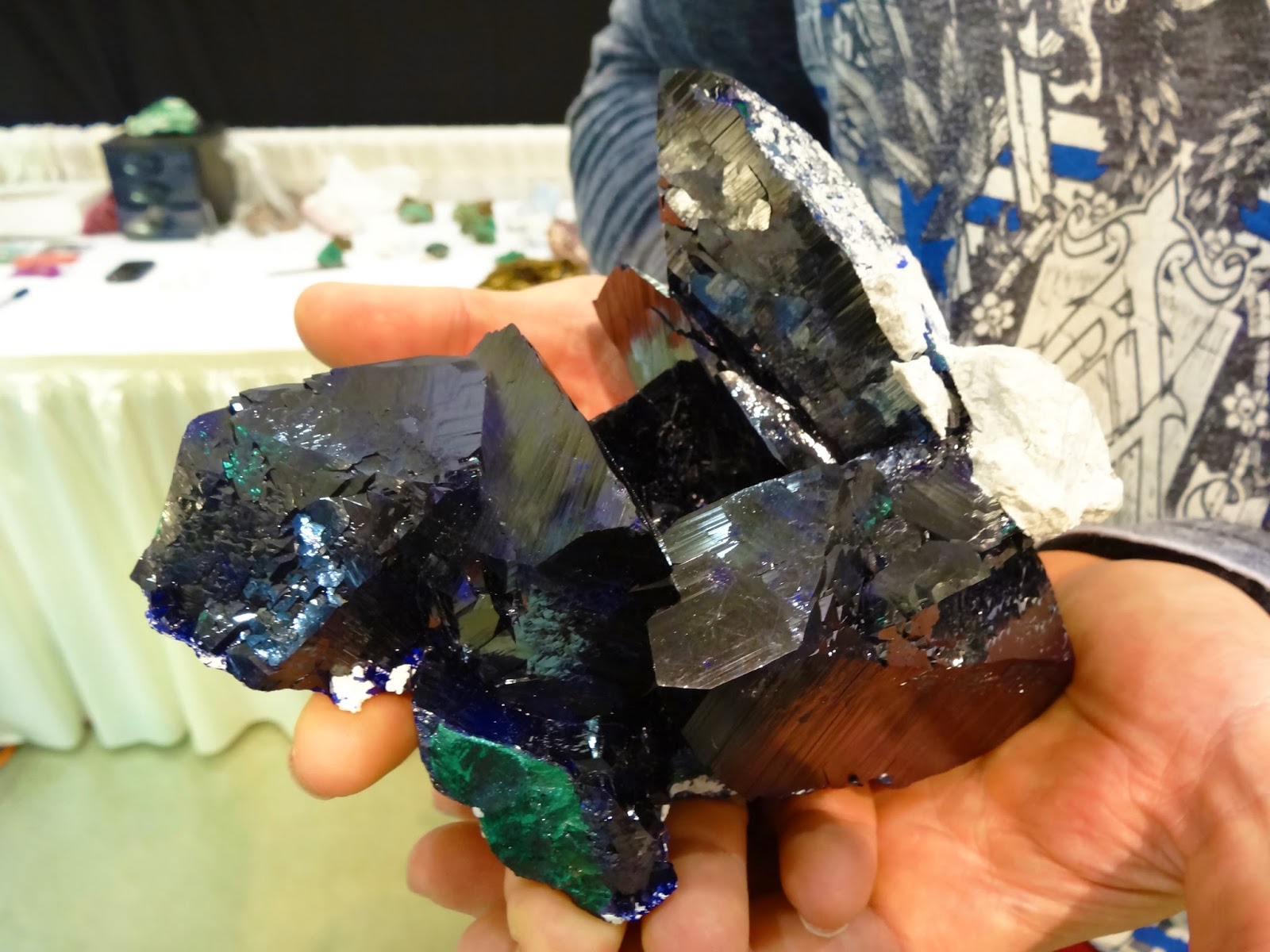





















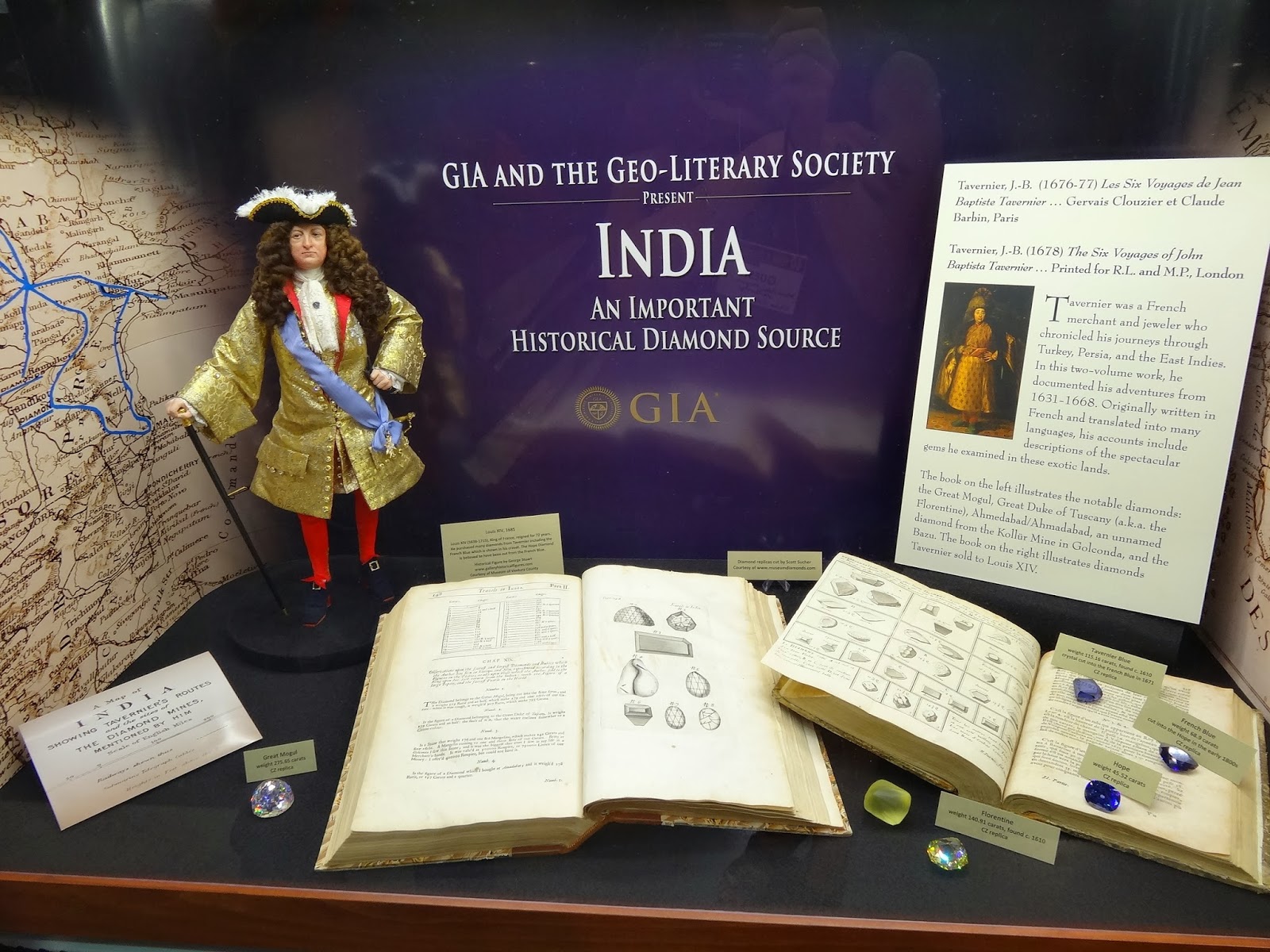









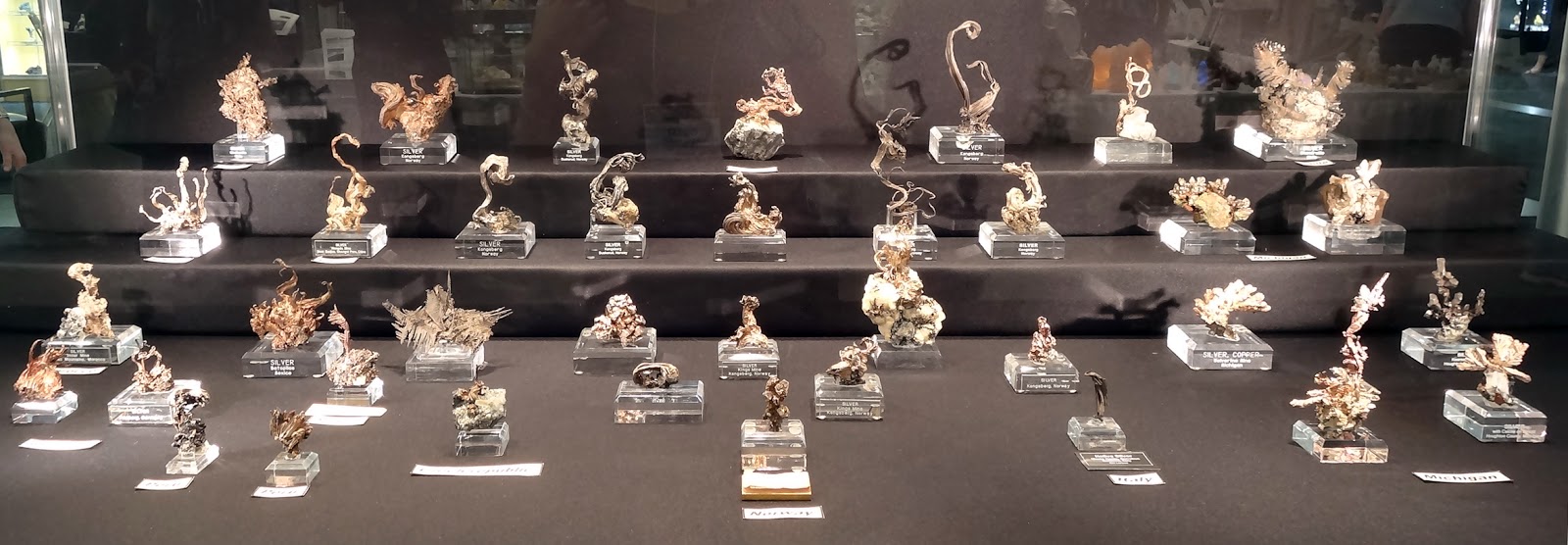




































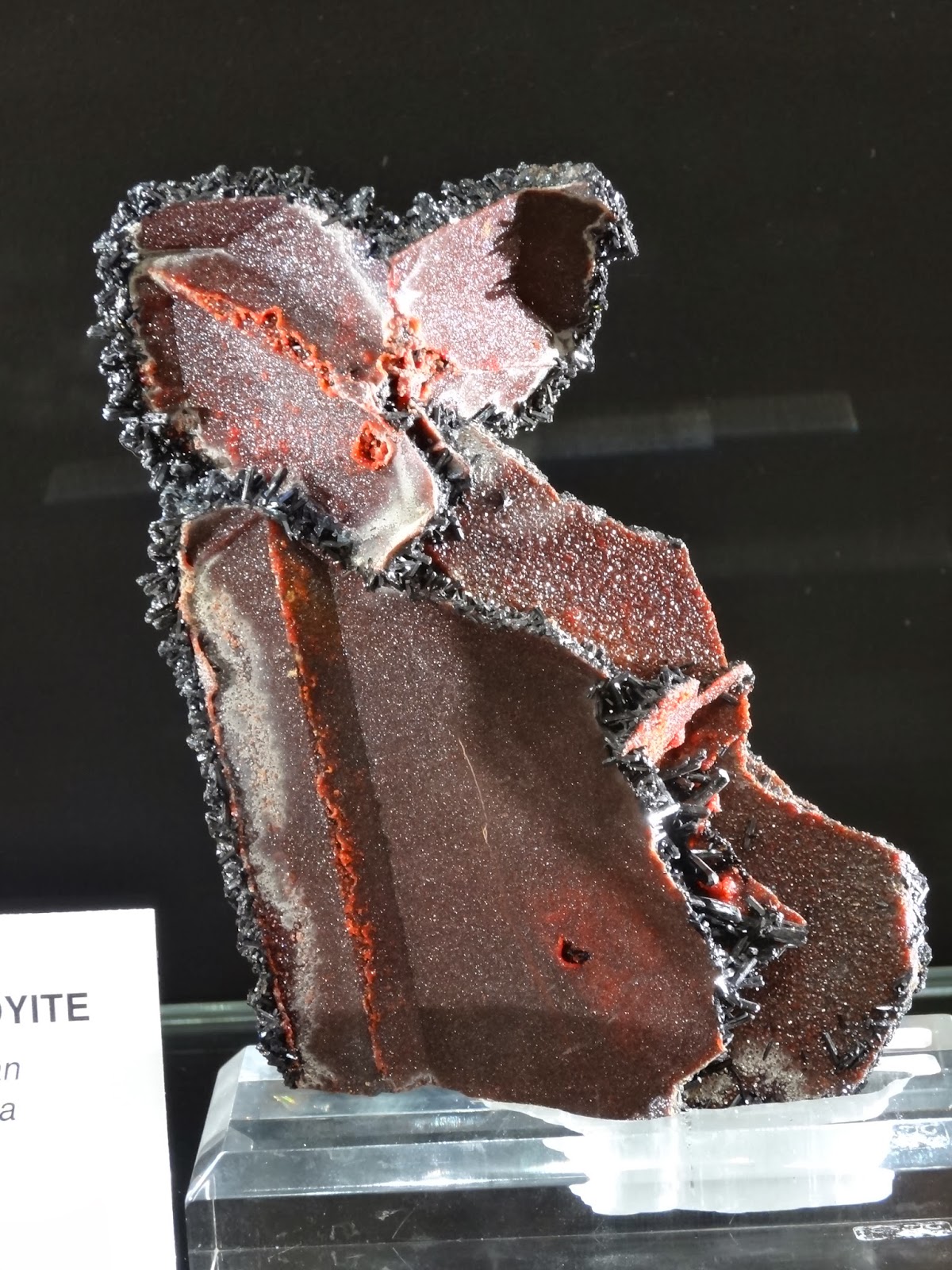



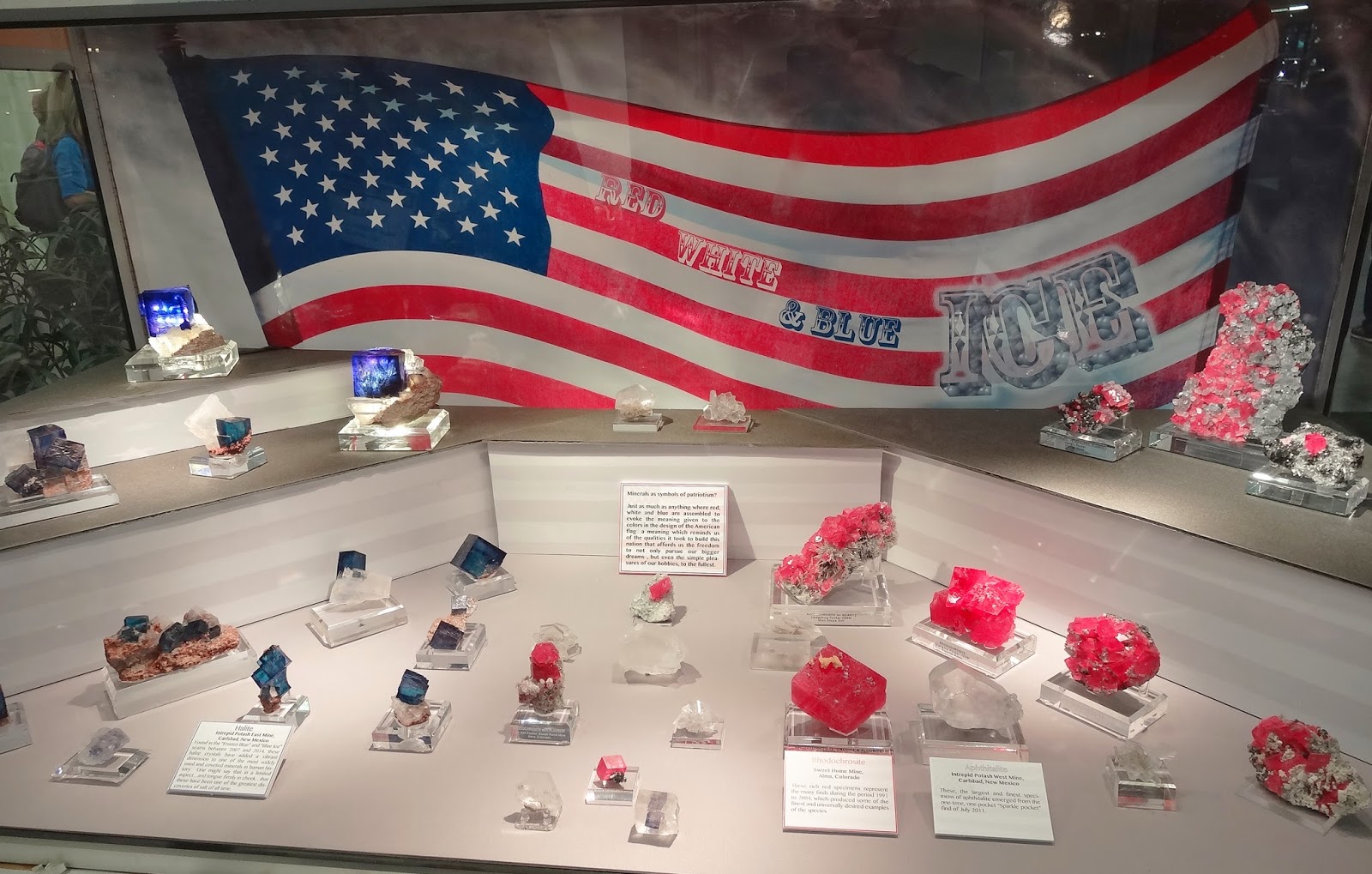

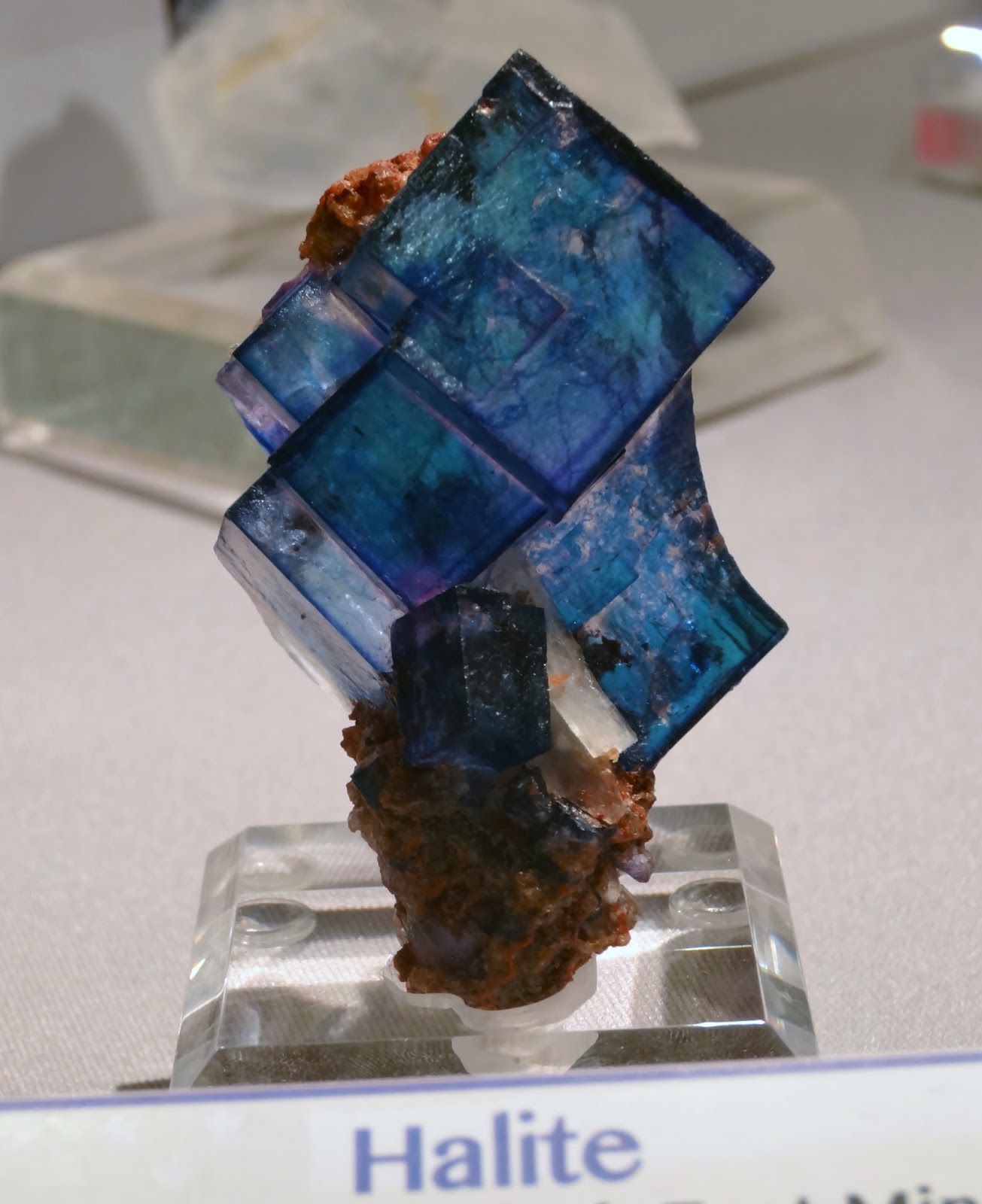























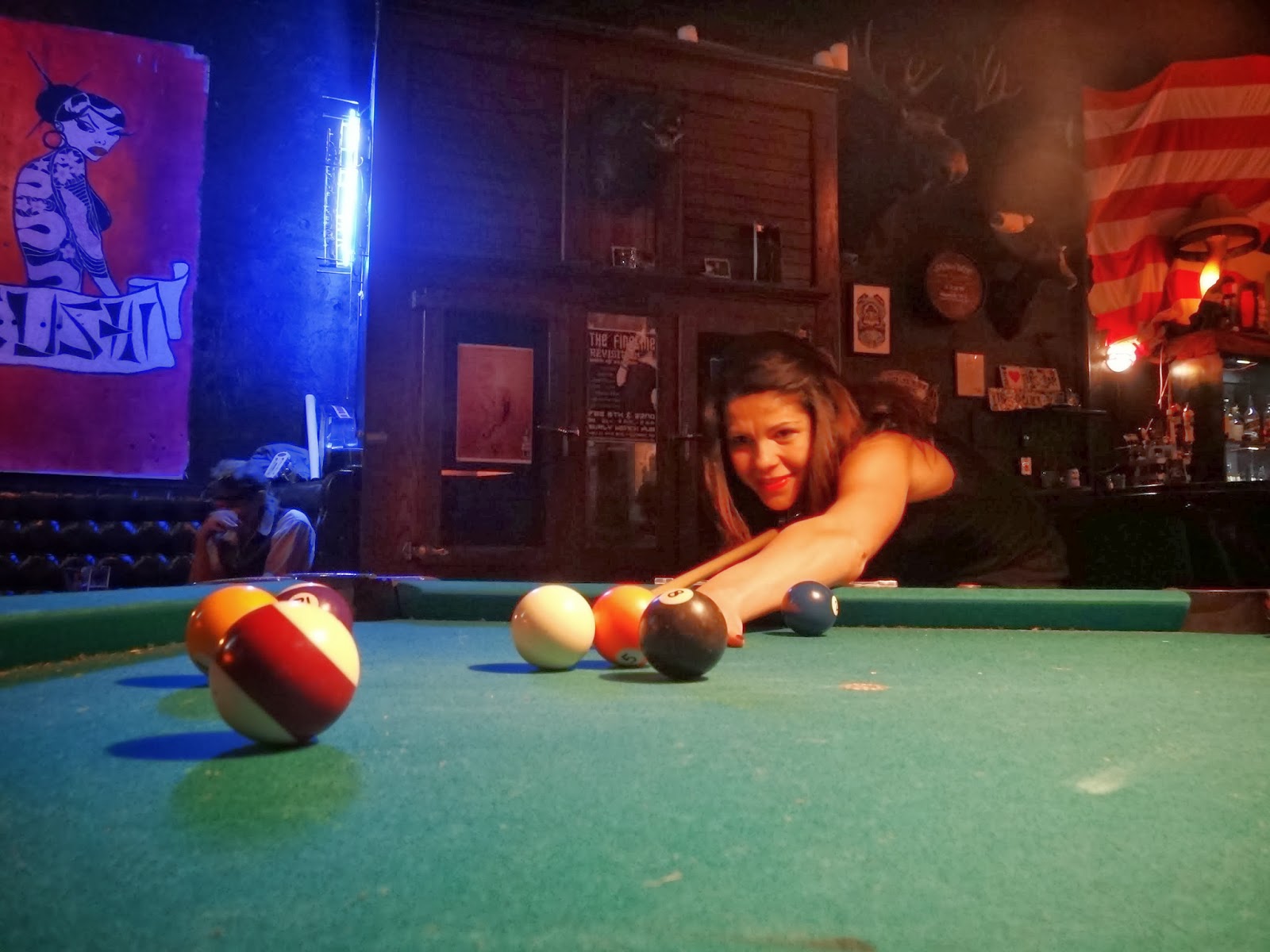














Interesting report, thanks for sharing your Tucson 2014 experience, I wish to peregrinate there in the future...
ReplyDeleteI have a smaller gold from the same location as the gold above. It was self collection by John Veevaret in the summer of 1979. He might have more information on this location.
ReplyDeleteGreat Report, thank you very much!
ReplyDeleteYour new gold nugget looks more like a dolphin to me :)
Greetings from Germany
And yes, it was a great show!
Hi, Elo,
ReplyDeleteYour new nugget looks like a road-flattened platypus to me. Great blog.
After 8 years in a row I missed Tucson this year. Thank you for posting these reports. I feel like I was there now. As for your "cobra" specimen of native gold I think it looks like a platypus in the pictures.
ReplyDeleteAs regards the LA County gold, I was thinking perhaps a manatee.
ReplyDeleteNice report. Wasn't there this year either so I have to live vicariously.
Cheers
LOVE all your photos, thanks for sharing your experience and comments for those of us unable to make it. Very appreciated.
ReplyDeleteGreat photos and commentary! But being from the moist side of the Cascades (seattle), must say your gold looks more like a Banana Slug than a cobra...
ReplyDeletele cobra : ne s'agit il pas en fait d'un os pénien de phoque pseudomorphosé en OR ? la question mérite d'être posée
ReplyDeleteREGARDING: gold nugget from Los Angeles County (no kidding), found in the San Gabriel River. It weighs 99.7 grams (3.2 oz. troys); it should be called The Duckbilled Platypus because that's what it looks like, it's bill is on the left.
ReplyDeleteREGARDING: gold nugget from Los Angeles County (no kidding), found in the San Gabriel River. It weighs 99.7 grams (3.2 oz. troys); it should be called The Duckbilled Platypus because that's what it looks like, it's bill is on the left.
ReplyDeleteThis one is late..way way late but why not just call it: The Banana cause that's what it looks like :) Will defenitely put a smile on peoples faces
ReplyDelete